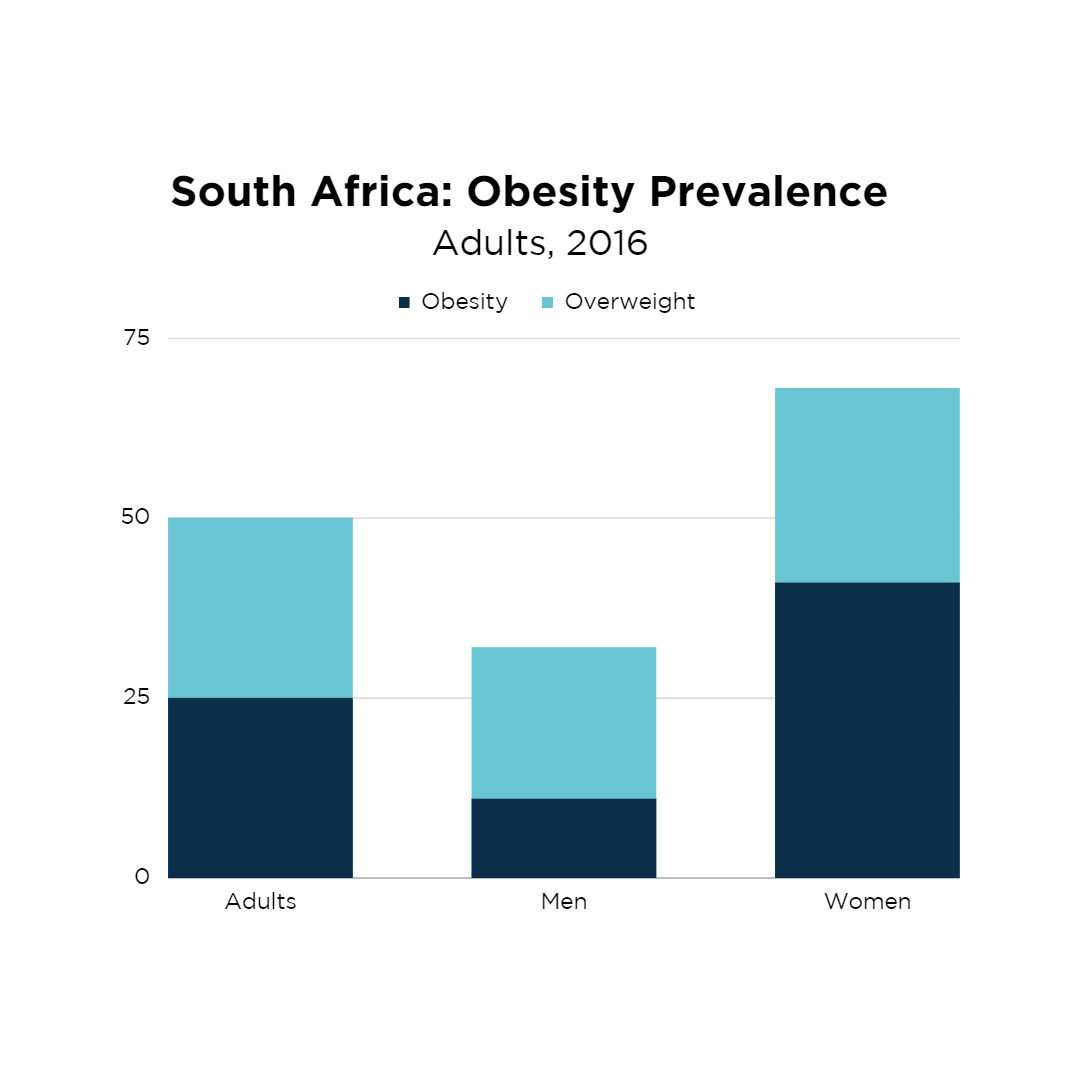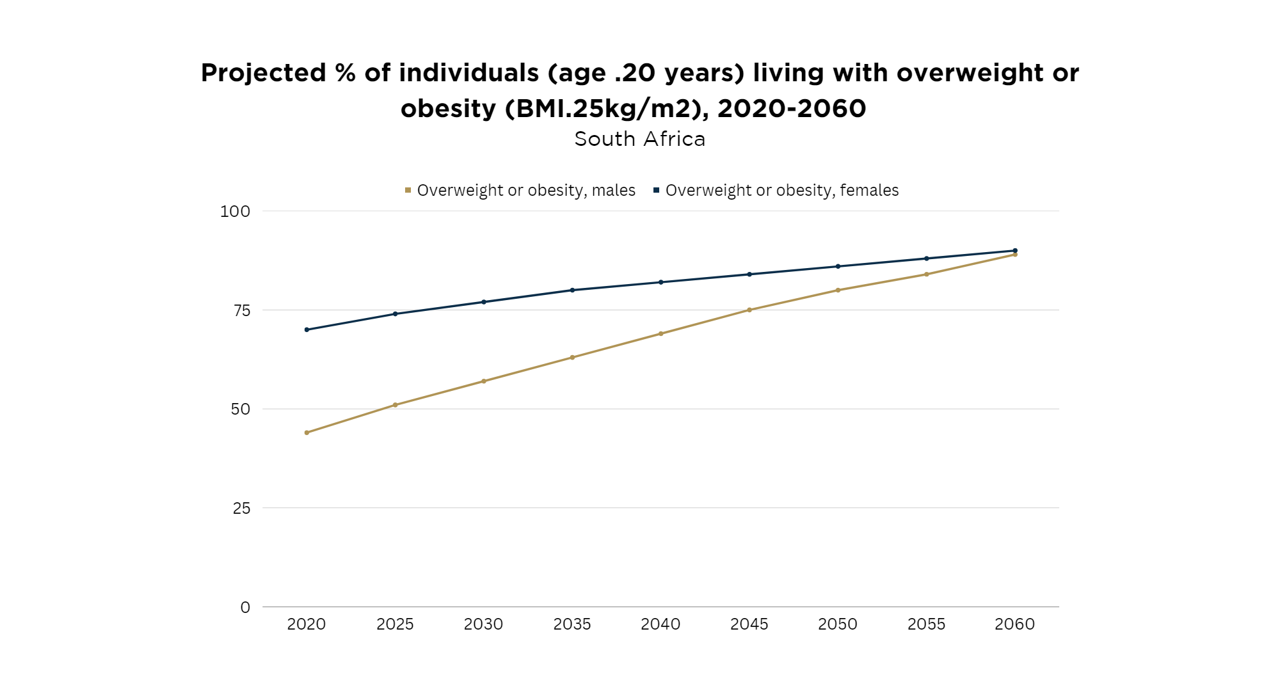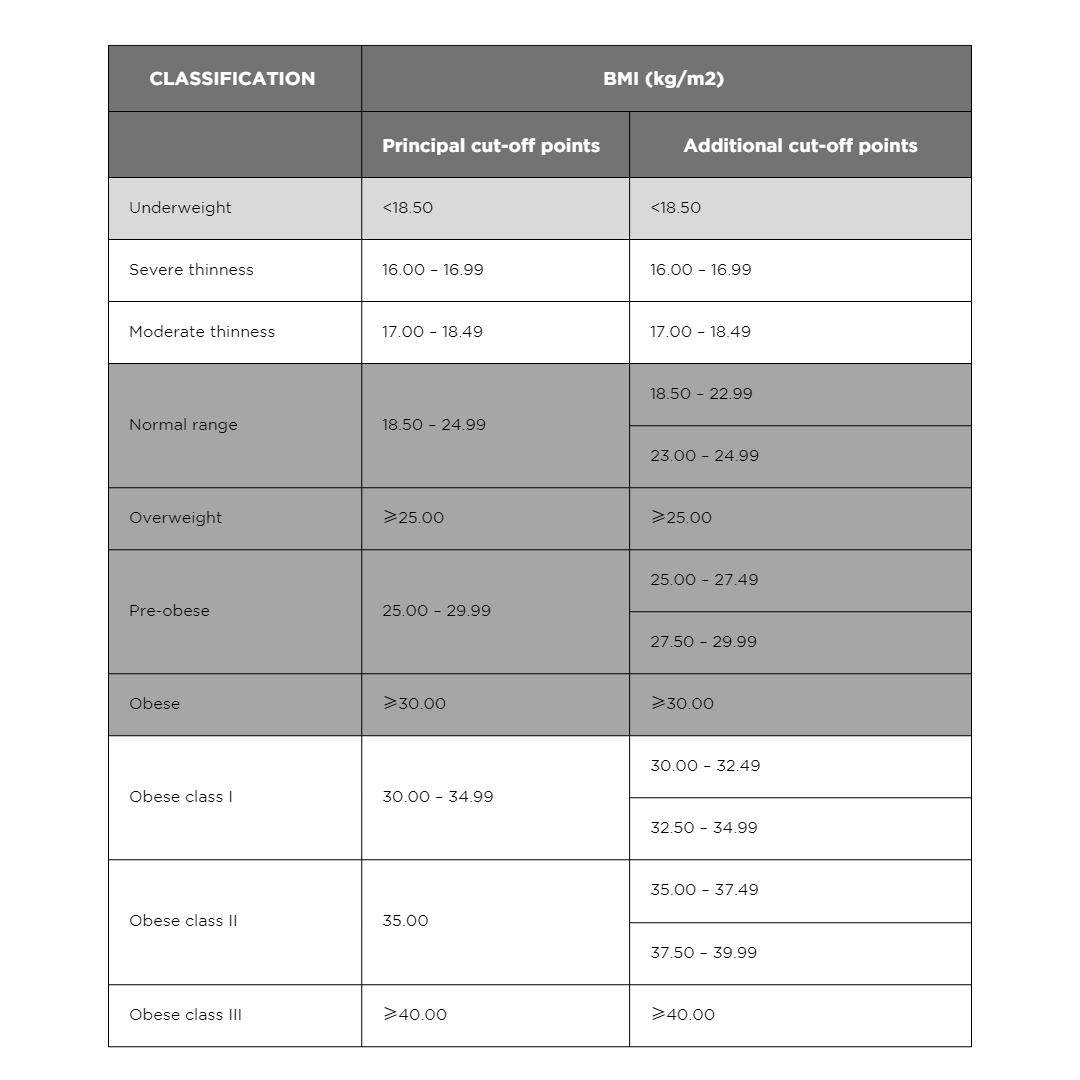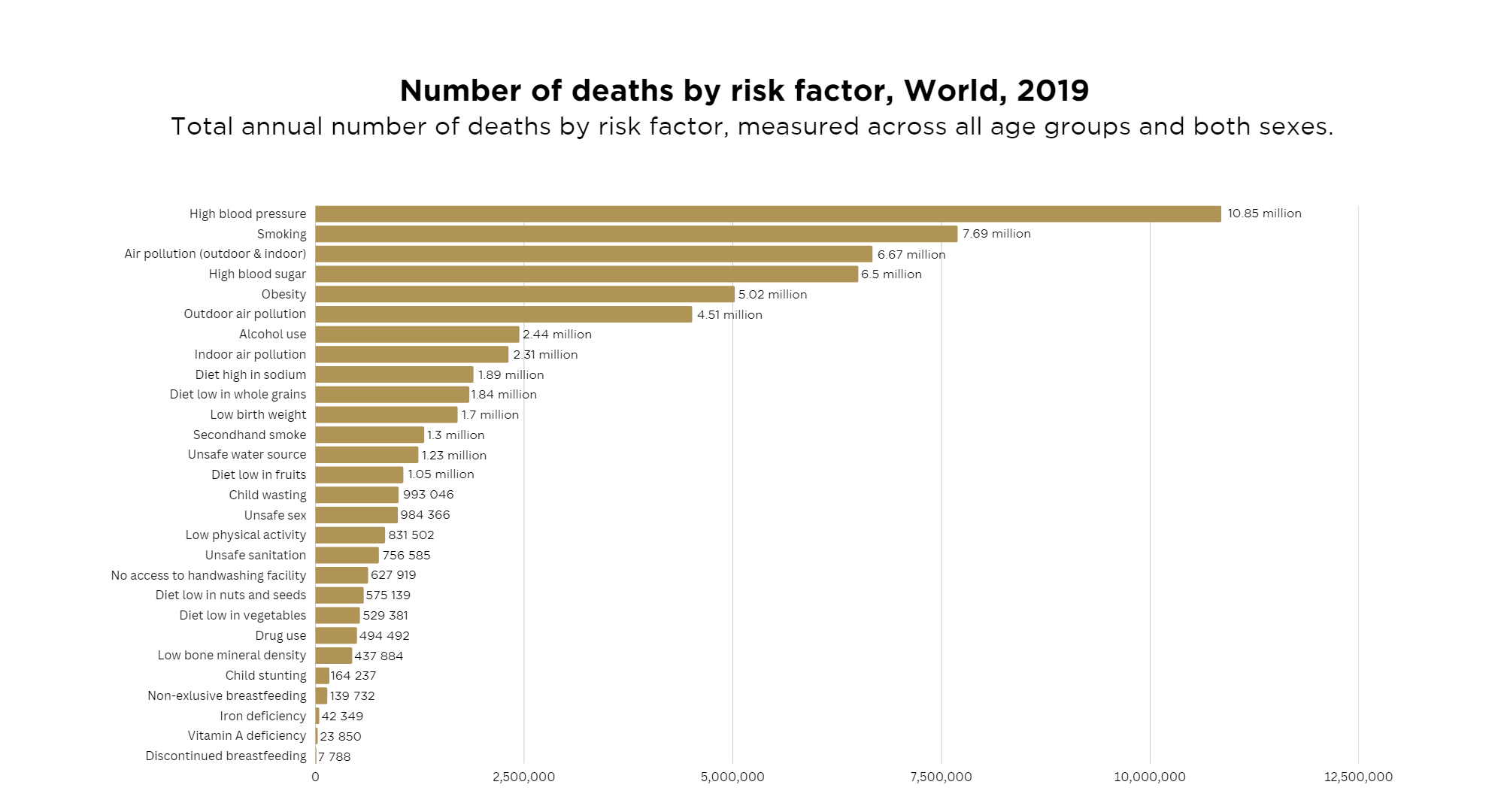Female obesity: what you need to know
The prevalence of obesity among South African females is expected to increase to 72% in the next three years. This is according to the World Obesity Federation, which predicted this trend in 2016 when it last compiled statistics on this issue for South Africa. The statistics – published on its website – indicate that if the current trend continues, the percentage of overweight and obese females in the country will increase to 90% by 2060.

Source: World Obesity
Survey Type: Measured
Age: 15+
Sample size: 7767
Area covered: National
References: National Department of Health (NDoH), Statistics South Africa (Stats SA), South African Medical Research Council (SAMRC), and ICF. 2019 South Africa Demographic and Health Survey 2016, Pretoria, South Africa, and Rockville, Maryland, USA: NDoH, Stats SA, SAMRC, and ICF
Notes: 3105 Men 4662 Women
Unless otherwise noted, overweight refers to a BMI between 25kg and 29.9kg/m2. Obesity refers to a BMI than 30kg/m2.

Source: World Obesity
In a recent article published in the BMC Public Health journal, Mweete Debra Nglazi and John Ele-Ojo Ataguba identified several factors that contribute to the risk of overweight or obesity among women in South Africa. Their research indicates that low-energy jobs and reliance on motorised transportation led to less energy expenditure, while long working hours and easy access to processed foods can impede healthy eating habits. Additionally, family history, multiple pregnancies, and negative emotions were identified as contributing factors.
Their conclusions are based on an extensive analysis of survey data from 1998 to 2017, during which the prevalence of obesity among females increased from 24.7% to 35.2%. The body mass index (BMI) is the most common measure used to assess an individual’s weight status. This is done by dividing their weight (kg) by their height (m) squared. As per the table below, a BMI between 18.50 and 24.99 is considered “normal”. Above 25.00, the range is considered overweight, and above 30.00, it is considered obese, according to the table below.

Another measurement used to indicate an individual’s risk of becoming obese is their waistline. In females, when their waistline is 80cm or higher, they are considered to have an increased risk of being classified as obese.
Obesity is a major risk factor for the development of medical conditions such as:
- Diabetes mellitus: can result in complications such as eye disease, kidney disease, heart disease, nerve damage and reduced micro-circulation to various body parts.
- Cancer: may increase the risk of developing uterus, cervix, endometrium, ovary, breast, colon, rectum, oesophagus, liver, gallbladder, pancreas, kidney and prostate cancer.
- Cardiovascular: this can lead to heart disease (cholesterol) and strokes (high blood pressure).
- Arthritis: when obesity is present, it can increase the stress placed on weight-bearing joints, in addition to increased inflammation within the body. These factors may lead to complications such as osteoarthritis.
- Sleep apnoea: obese people are more likely to have sleep apnoea, a potentially serious disorder where breathing repeatedly stops and starts during sleep.
A study has indicated that women with a BMI of 30 have a 28 times greater risk of developing diabetes than women of normal weight, and the risk of diabetes is 93 times greater if the BMI is 35. The website, Our World Data, found that high blood pressure, smoking, air pollution, high blood sugar and obesity are the five most common risk factors people die from.

Source: IHME, Global Burden of Disease (2019) OurWorldInData.org/causes-of-death*CC BY
Even with the prediction that South Africa might see high numbers of obese females in future, the country is far from the worse in the world. According to the World Population Review’s Obesity Rates by Country 2023, obesity rates in some countries range between 45.8% (Micronesia) and 61% (Nauru). South Africa, with a current estimated population of 66 414 495 and an obesity rating of 28.3%, is placed 30th on the highest obesity rating list.
PPS’s take on obesity
When a female member applies for cover with PPS Insurance, their BMI is taken into consideration for all products. PPS requires weight and height information on all application forms and in the short- and limited-health reports. BMI loadings vary depending on the age group and type of product. PPS also considers being underweight as a risk factor for adverse health and may request more information to assess the health of the applicant. Many products have a loading for abnormal BMIs.
Each product also has a minimum and maximum BMI beyond which cover cannot be offered. If members have additional co-morbid conditions such as diabetes mellitus or cardiac disease, these policies may also attract loadings or exclusions due to the increased risk associated with the combination of high BMI and co-morbidities. Sometimes, even if the BMI is below the maximum limit, the risk may be too high when combined with other illnesses or factors, resulting in cover being declined.
Due to all these health risks that might happen in conjunction with the PPS underwriting method, statistics show PPS has loaded 1.8% (2 185 members) PPS female members’ policy with an obesity loading of between 10% – 90%. All these members are between 23 and 68 years.
PPS products:

Female members with a BMI score of higher than 30 should consult their health practitioner for advice on how to reduce it. For a PPS member to review the loading, proof of reduced weight – which has been maintained for at least 12 months – will be required (proof includes health checks or a report from a medical attendant).
Why Should I Know This about BMI has more information about BMI, obesity and PPS’s view regarding these issues.
References:
https://worldpopulationreview.com/country-rankings/obesity-rates-by-country
https://data.worldobesity.org/country/south-africa-197
https://www.westerncape.gov.za/general-publication/obesity-your-waistline-killing-you
https://www.mayoclinic.org/diseases-conditions/obesity/symptoms-causes/syc-20375742
Barnes AS. The epidemic of obesity and diabetes: trends and treatments. Tex Heart Inst J. 2011;38(2):142-4. PMID: 21494521; PMCID: PMC3066828.
By Monique Drotsky: Technical Marketing Specialist and Dr Nadia Goolam Amod: Senior Medical Officer
PPS is a licensed insurer conducting life insurance business, a licensed controlling company and an authorised FSP.
Business Brief Articles
https://www.pps.co.za/business-brief/female-obesity-what-you-need-know







